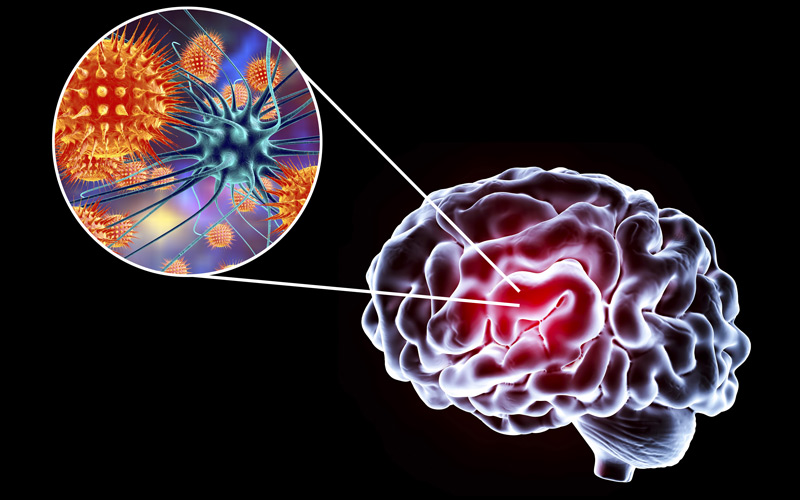This month: Eastern equine encephalitis virus

I’ve never heard of this virus. What is it?
Eastern equine encephalitis is a rare disease – with only a few cases reported worldwide each year – that is caused by a virus spread by infected mosquitoes.
How serious is it for those who are infected?
A third of those with the infection die, and many survivors suffer lasting neurological problems. Also, scientists predict that as the planet warms and climate change lengthens mosquito populations’ seasons and geographical reach, risk of infection will grow.
What are the latest developments?
An atomic-level investigation has taken place into how Eastern equine encephalitis virus binds to a key receptor and gets inside of cells. The work has also led to the discovery of a decoy molecule that protects against the potentially deadly brain infection in mice.
What are the implications?
By advancing understanding of the complex molecular interactions between viral proteins and their receptors on animal cells, the findings lay a foundation for treatments and vaccines for viral infections, according to the authors.
Tell me about this decoy molecule?
The researchers created a panel of decoy receptors in the hope the virus would mistakenly bind to the decoy instead of the receptor on cells, and the decoy with the virus attached could then be cleared away by immune cells.
How did they get on?
Through a combination of the structural work and the domain deletion work, the team was able to figure out which domains are the most critical and create a quite effective decoy receptor that can neutralise viral infection.
Where can I read more?
You can access their paper at bit.ly/3TLXdgi.
Image credit | Shutterstock




